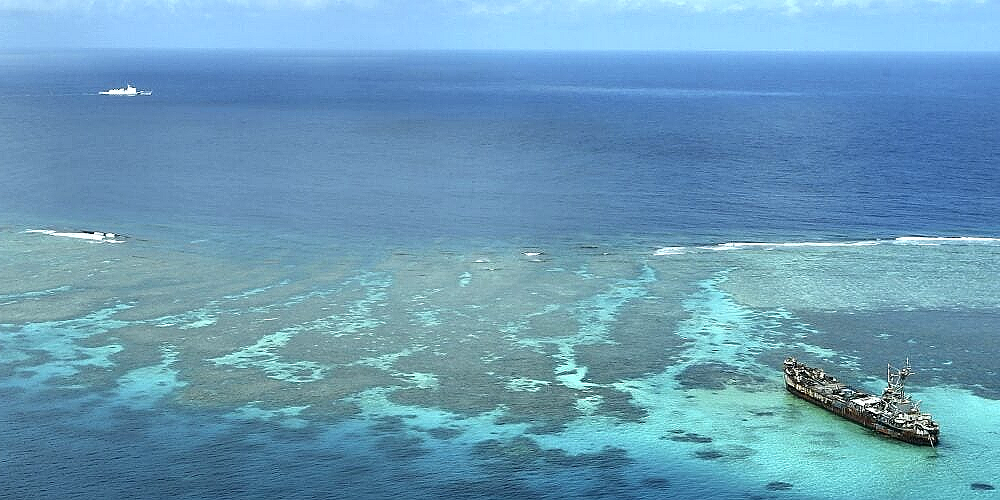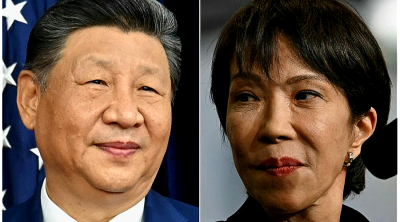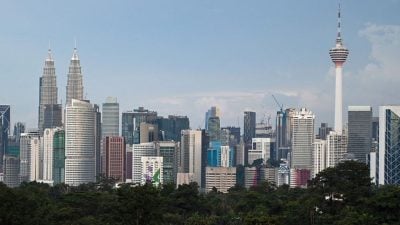
American leadership is what holds the world together,” declared United States President Joseph Biden amid an era of unprecedented strategic challenges, stretching across the Eurasian landmass and the Indo-Pacific.
Accordingly, he called on the US Congress to support the expansion of defense aid to besieged allies in Eastern Europe and the Middle East.
Billing himself as a “wartime president,” Biden asked for additional defense aid of $61.4 billion for Kyiv and $14.3 billion for Tel Aviv.
Meanwhile, the entire Indo-Pacific theater, home to the world’s largest and most dynamic nations, would be entitled to $2 billion in additional funding. In many ways, the US President’s speech was both understandable and baffling.
On one hand, Biden sought to present the US as an anchor of international stability as well as a reliable strategic patron to allies in multiple theaters of conflict. Yet, the gap between the US defense spending priorities, on the one hand, and the American people’s threat perceptions, on the other hand, is quite telling.
According to the latest Pew Research Center survey, American people overwhelmingly see China (50 percent) as the greatest source of external threat, far ahead of Russia (17 percent) and North Korea (2 percent).
Interestingly, Biden himself and the US defense establishment themselves have repeatedly identified China as the greatest challenge to American primacy throughout the years.
Moreover, the US has been extremely generous to allies in both Eastern Europe and the Middle East. Last year, Ukraine received more than $46 billion in aid from Washington alone.
As for Israel, it received more than $300 billion in military aid between 1946 and 2022. With both allies facing security challenges, the US is signaling massive military aid for the foreseeable future.
And this, dear reader, brings us to the Philippines and, accordingly, existential threats in the West Philippine Sea.
To put things into perspective: America’s total defense aid to the Philippines in the past decade has been barely above $1 billion, even as we have been confronting the world’s largest naval force in the South China Sea.
In fact, the Philippines is confronting three ticking time bombs in the South China Sea. First is, of course, the Scarborough Shoal, which was coercively overtaken by China in 2012 after Washington refused to decisively intervene on behalf of its ally.
And as the latest developments suggest, a potential armed confrontation between China and the Philippines over the contested shoal is far from unthinkable.
Just as worrying is the simultaneous crisis in the Second Thomas Shoal. Our de facto base in the area, the dilapidated BRP Sierra Madre, is about to succumb to the elements, but China has made it crystal clear that they would intervene should we seek to refurbish our position in the area.
So, the Philippines is facing an impossible situation, whereby it risks either confrontation with an Asian juggernaut or losing more sovereign rights in the West Philippine Sea.
As if that weren’t bad enough, the Philippines is also running out of time to secure its energy security.
The Malampaya plant is set to run out in the coming years, but we are yet to develop our energy resources in the Reed Bank area amid China’s constant harassment.
Years-long negotiations over a joint exploration deal, under a “service contract” modality, collapsed, thanks to Beijing’s refusal to respect both international law and the Philippines’ constitution.
Next to Taiwan, which faces the real prospect of a full-scale Chinese invasion, the Philippines is arguably the most besieged American ally in the Indo-Pacific.
And unlike America’s allies in other major theaters, we are yet to develop a minimum credible defense posture against a superpower.
Against this backdrop, we should welcome Vice President Sara Duterte’s (surprisingly) statesmanlike intervention last week, namely her call for a (humanitarian) ceasefire and “long-term peace” in the Middle East.
We should also hope that Ukraine will soon be in a position to negotiate for peace from a position of strength in order to best protect its sovereignty against an aggressive Russia.
The reality is that the Philippines can’t deal with the China challenge without robust US assistance.
Yet, the US is no longer a “hyperpower,” namely the colossus that could intervene in multiple theaters effectively.
And China, like no other revisionist actor, is in a position to threaten multiple US allies in the Indo-Pacific.
ADVERTISEMENT
ADVERTISEMENT








































